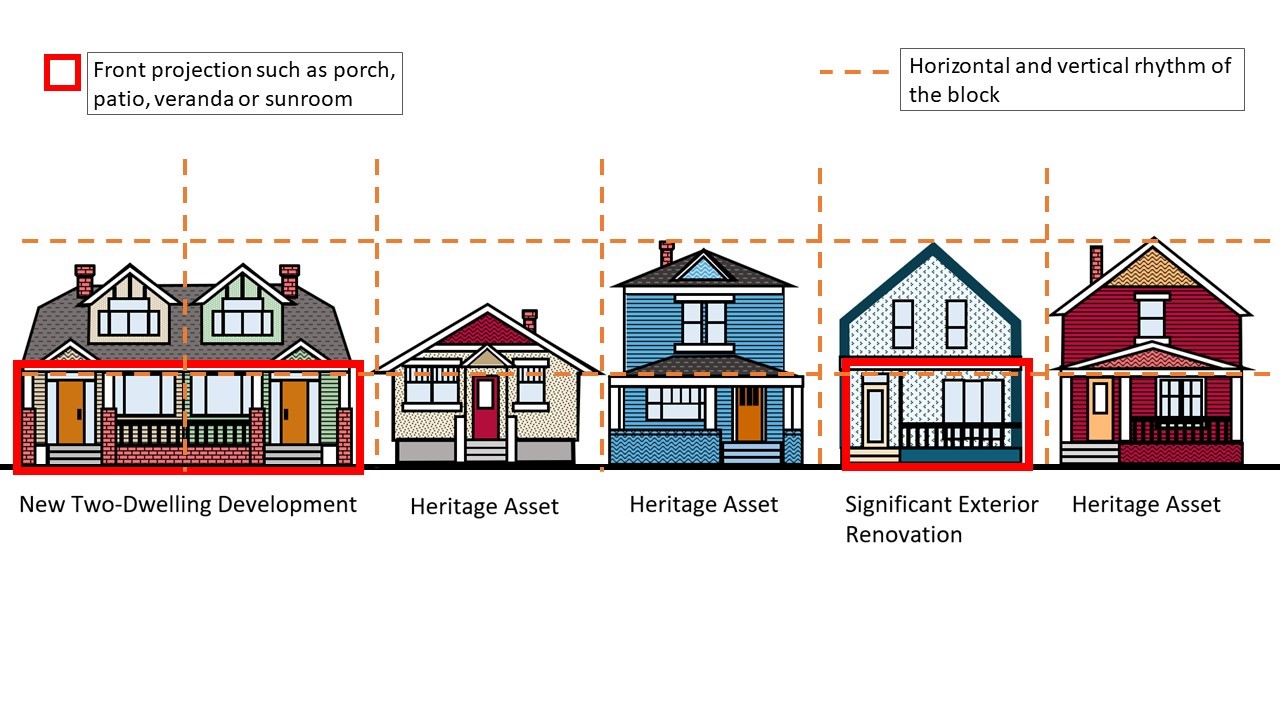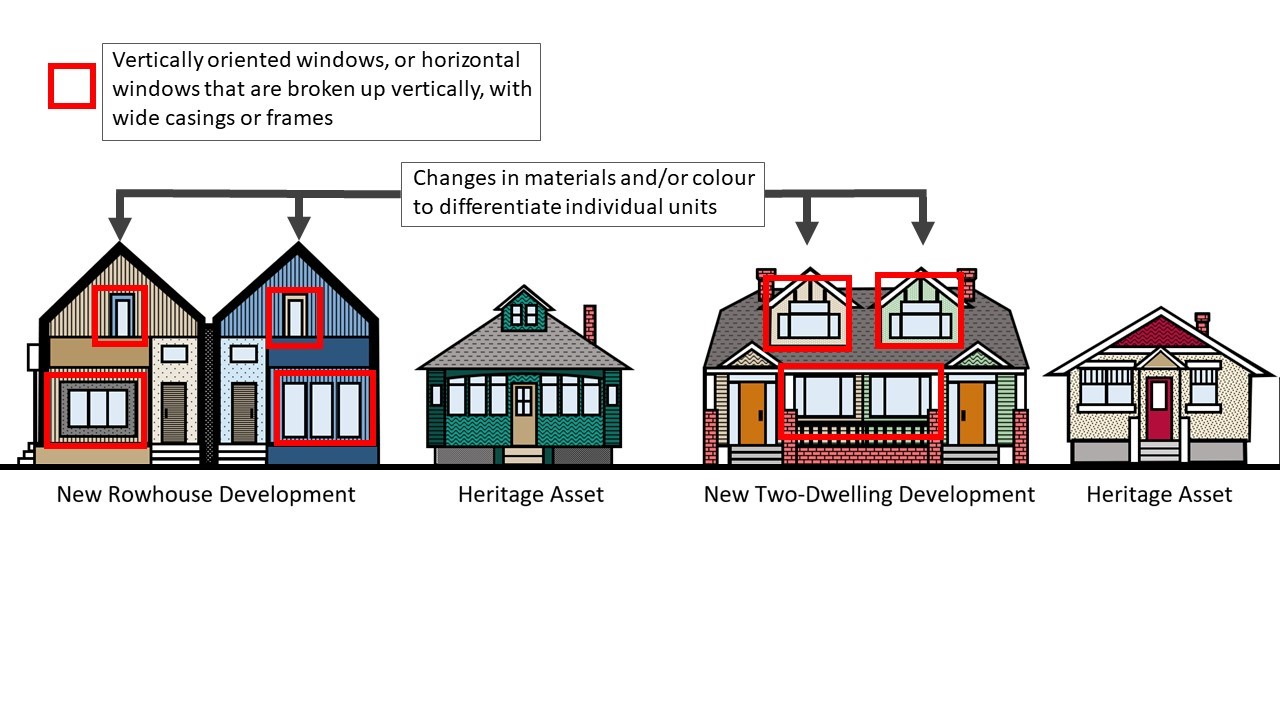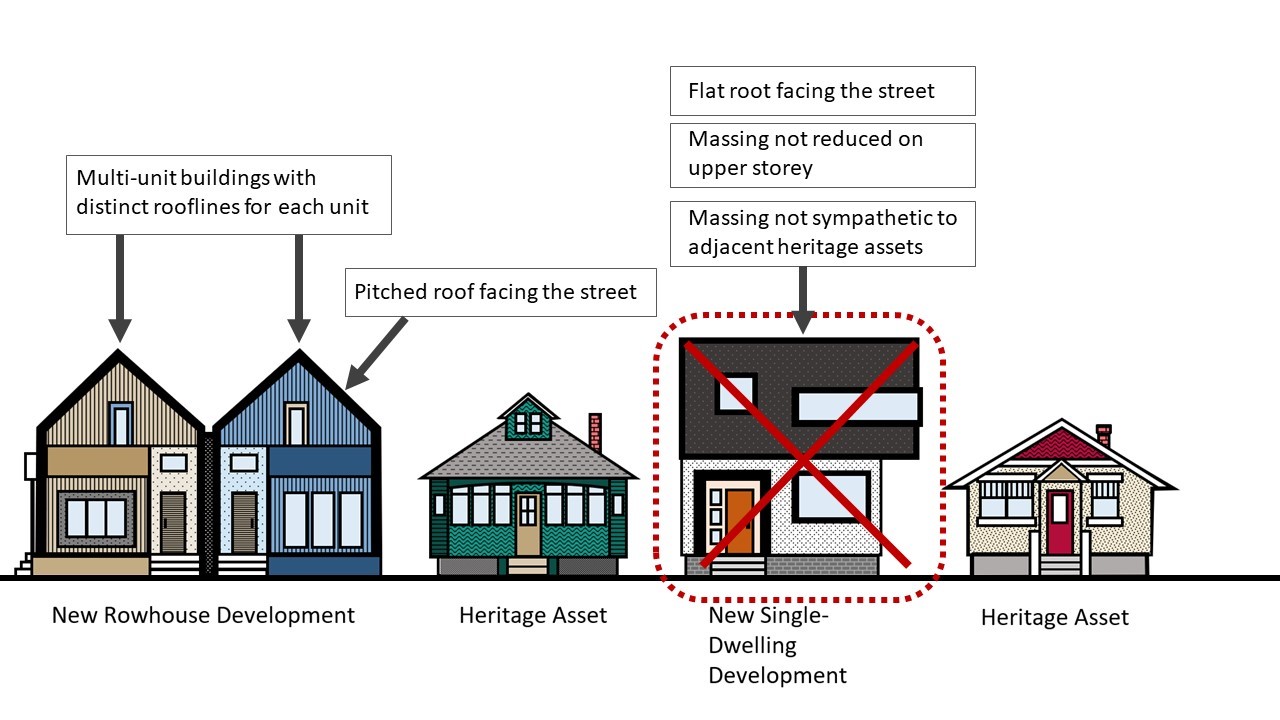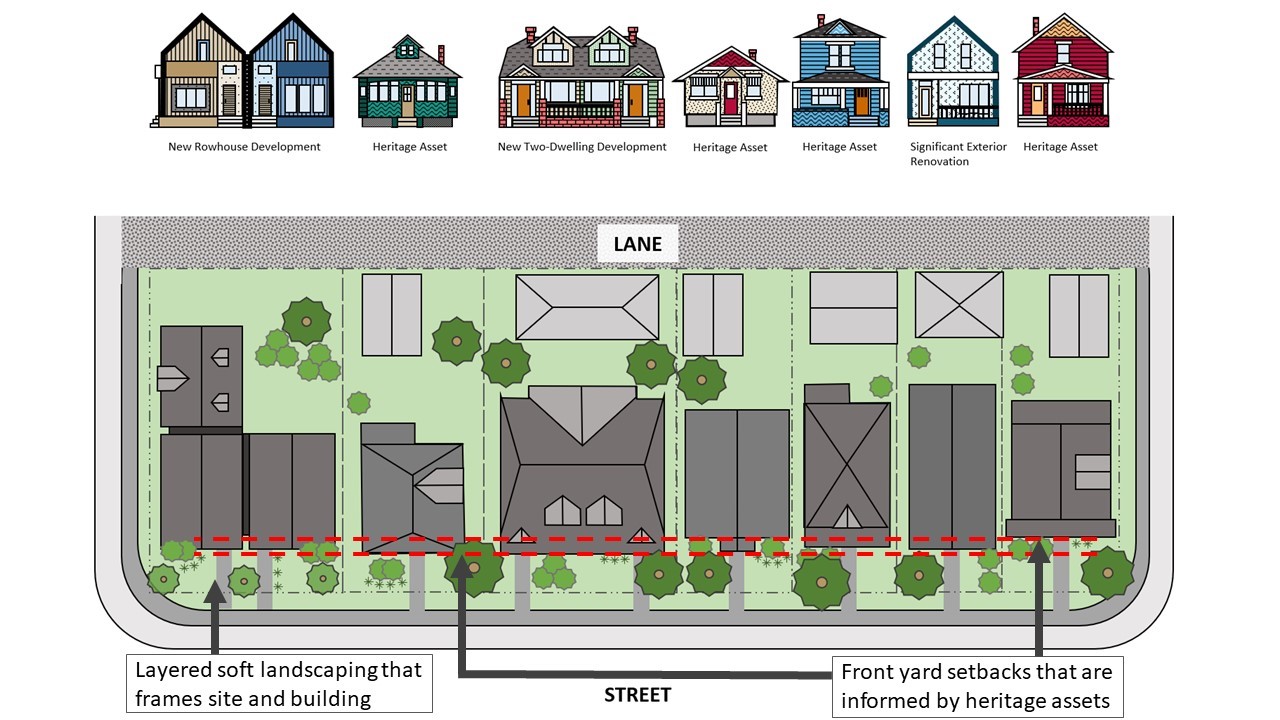PROJECT UPDATE
The Heritage Guidelines for the North Hill Communities Local Area Plan was approved by Council on December 6, 2022. The Heritage Guidelines have been included in section 2.6 Heritage of the North Hill Communities Local Area Plan. To support those who will be implementing the Heritage Guidelines as part of the redevelopment of their property, an Implementation Guide has been prepared.
The Land Use Bylaw was also updated, to include maps of the Heritage Guideline Areas within the North Hill Communities Local Area Plan. The maps show the parcels with heritage assets and where the Heritage Guidelines apply.
ABOUT THE PROJECT
Starting in November 2021, we worked with interested or impacted groups and individuals in the North Hill communities area to create Heritage Guidelines for areas in the North Hill Communities that have concentrated groupings of heritage assets. Heritage assets are privately owned structures, typically constructed prior to 1945. They significantly retain their original form, scale, massing, window/door pattern and architectural details or materials.
The Heritage Guidelines will contribute to the historic character of these specific areas by ensuring that new development respects existing heritage assets. The Heritage Guidelines are included in the North Hill Communities Local Area Plan (LAP), the long-range planning policy document that guides growth and change within these communities.
These are the first areas in Calgary to benefit from Heritage Guidelines. The Heritage Guidelines created as part of this work will inform subsequent Heritage Guideline Areas for other local area plans.
BACKGROUND
Communities in Calgary have sought area-based heritage conservation tools for a long time. In July 2020, Council approved a series of conservation tools and incentives to offer that area-based approach. The North Hill Communities LAP identifies a total of eight Heritage Guideline Areas, the first in the city.
For more information about heritage property tools and incentives, click here.
- Privately-owned building, typically constructed before 1945
- Retains most of its original style, design, details and construction materials (determined through a visual assessment)
Heritage Guideline Areas are identified through the Local Area Planning process. Their boundaries consider the vision and policies of the local area plan and the 2019-2020 Heritage Asset Windshield Survey.
Heritage Guideline Areas are areas that have concentrated groupings of heritage assets. Typically, they are areas where these assets make up greater than 25% of a block face. The local area plan will include specific design guidelines to ensure that new development is compatible and fits with the historic character of the area.
The Heritage Guidelines will help ensure new development respects the historic character of existing homes and positively contributes to the ongoing historic nature of these areas. When the Heritage Guidelines are in place, any plans to build or renovate homes within the boundaries must meet the Heritage Guidelines.
Calgary’s Land Use Bylaw can make certain uses discretionary in specific areas of the city. New development in the identified Heritage Guideline Areas will be made discretionary to allow the Heritage Guidelines to be applied to planning applications proposing new development and significant exterior renovations. The Heritage Guidelines for North Hill Communities will only apply within the defined Heritage Guideline Areas.
The Calgary's Land Use Bylaw lists what types of use and developments are allowed for new developments in a location.
Some uses and development types are automatically allowed for a property, and these are called permitted uses. If the proposal meets all of the Land Use Bylaw rules, development permits for permitted uses have guaranteed approval by The City.
The Land Use Bylaw also lists discretionary uses for a property. Even though there are restrictions on the type of use and development allowed, development permits for things in the discretionary uses list might be approved by The City at its discretion. The discretion is often based on guidelines or other special conditions.
Any plans to build or renovate homes within the Heritage Guideline Area boundaries must meet the Heritage Guidelines. Development plans will be approved at the discretion of The City to ensure the Heritage Guidelines have been adhered to. The current development permit approvals process doesn't require the same level of scrutiny and approval.
The Heritage Guidelines are in effect as of December 2022.
Alongside existing heritage tools and incentives, a set of three new related tools are being developed to maintain the character of heritage-rich areas in Calgary. The Heritage Incentives Area, Heritage Guideline Areas and Direct Control Heritage Area tools are intended to build upon each other to make it more desirable to keep identified heritage assets and character homes in areas where these buildings are more concentrated.
HERITAGE GUIDELINES
ENGAGEMENT SUMMARY
To complement the ongoing work of the project working group, an engagement page was created for the project in April 2022. The purpose of this page was to provide interested or impacted groups or individuals with a summary of the proposed Heritage Guidelines and gather their feedback. Participants shared feedback about what they felt was positive about the proposed Heritage Guidelines and what issues or concerns they had.
Some participants expressed unconditional support for the draft Heritage Guidelines, while others did not want the Heritage Guidelines implemented in any form as they felt they will be too restrictive. Feedback received during online engagement can be found in the What We Heard Report.
Feedback from the working group and public engagement was reviewed and used to make refinements to the Heritage Guidelines.
Heritage Guidelines Summary
The Heritage Guidelines are intended to apply to new development and significant renovations in the Heritage Guideline Areas. The Heritage Guidelines address general characteristics of buildings rather than enforcing strict architectural rules.
Although the design of new development needs to be sensitive to and respect existing heritage assets, the intent of the Heritage Guidelines is not to require new development to have an historic appearance. Instead, the Heritage Guidelines are written to encourage modern development that is highly contextual and echoes the past context established by existing heritage assets.
The North Hill Communities Heritage Guidelines address four overarching building elements:
- site and landscape design
- roofs and massing
- front façades
- windows, materials and details
Below is a summary of the Heritage Guidelines. Click here to read the full Heritage Guidelines.
Front Facades
The front façade of a building provides an important relationship between a building and the street. This is how the building is most often viewed and therefore it is important that the front façade take cues from surrounding heritage assets. New development should have a front façade projection on the main floor that may be covered or enclosed and comprises at least one third of the façade. This could include building design elements such as porches, patios, verandas or sunrooms.

Windows, Materials and Details
Throughout the Heritage Guideline Areas certain defining historical details exist, which are visible in the heritage assets. The Heritage Guidelines ensure new developments include some of these details, while also allowing for modern interpretation and design. Design elements to consider include vertically oriented windows, natural looking materials and varying materials and/or colour to differentiate individual units.
Roofs and Massing
The roof style and design of a building influence how well it fits in with surrounding heritage assets. The intent of the Heritage Guidelines in this section are to reduce the visual impact of new development by considering roof design and building massing (e.g., size and shape), particularly in how they relate to heritage assets. New buildings should also have a minimum 6:12 roof pitch and developments with more than one unit should have distinct rooflines for each individual unit.

Site and Landscape Design
Site and landscape design are important factors in how a building fits in with the surrounding area. Building setbacks from the street are informed by the setbacks of heritage assets, planting trees in the front yard or boulevard help a building fit in with existing homes and support the urban tree canopy. New homes should also have well-defined and direct pathway connections to the public sidewalk.





